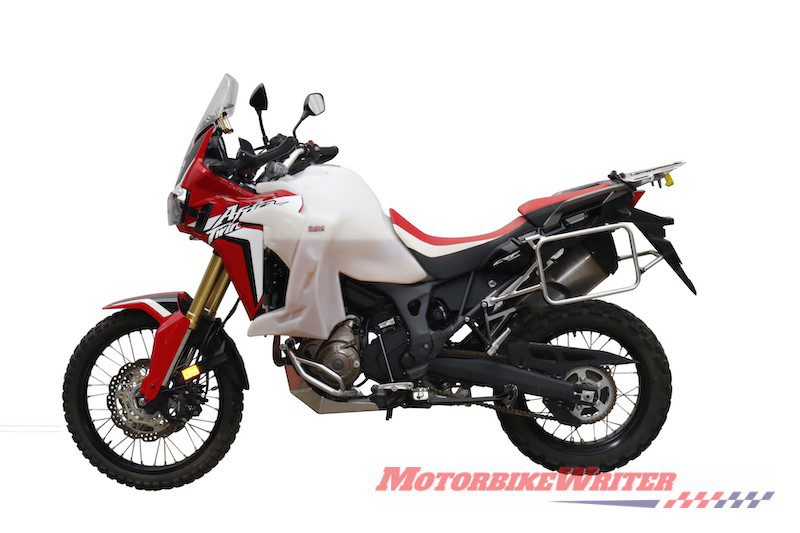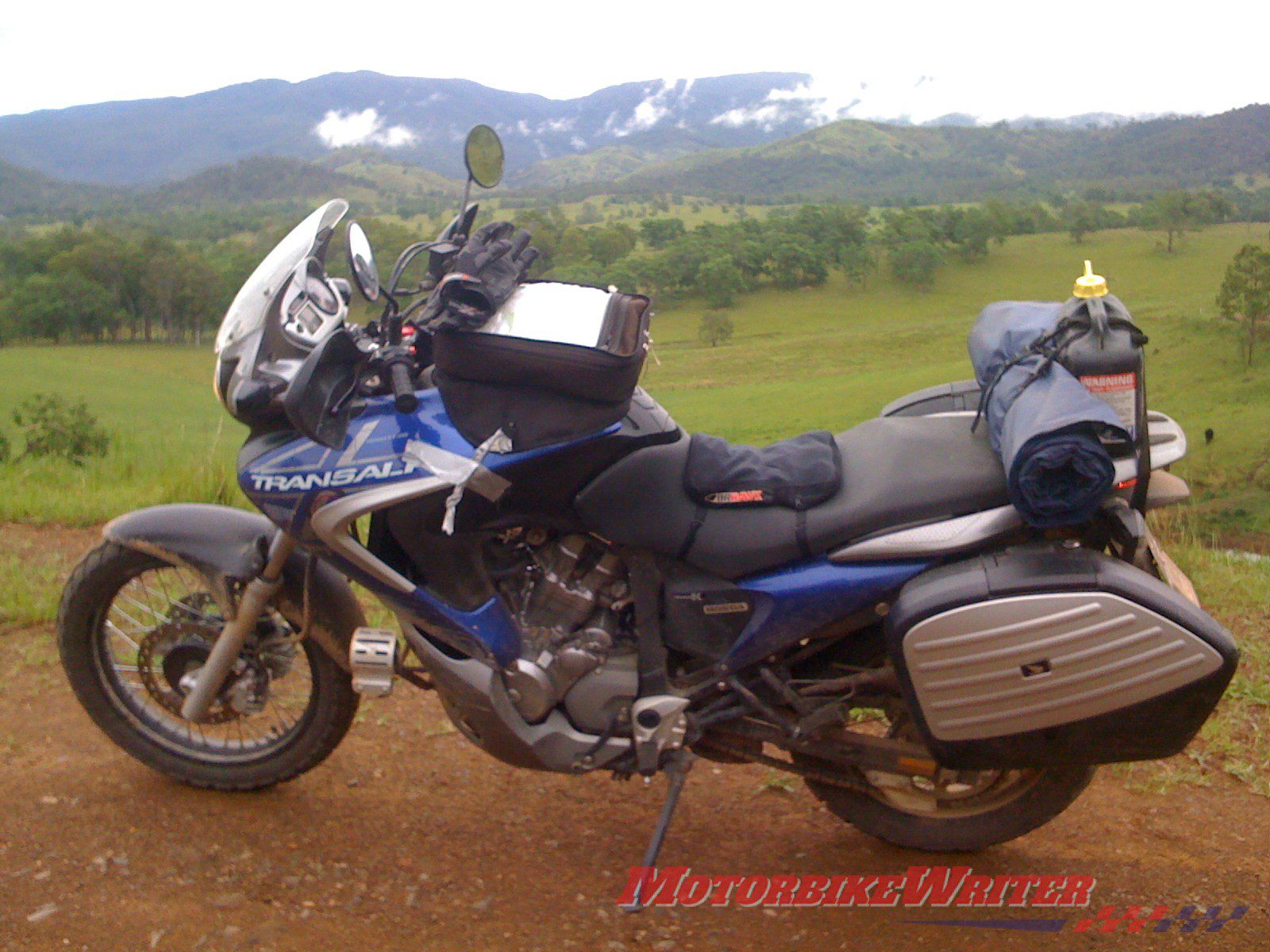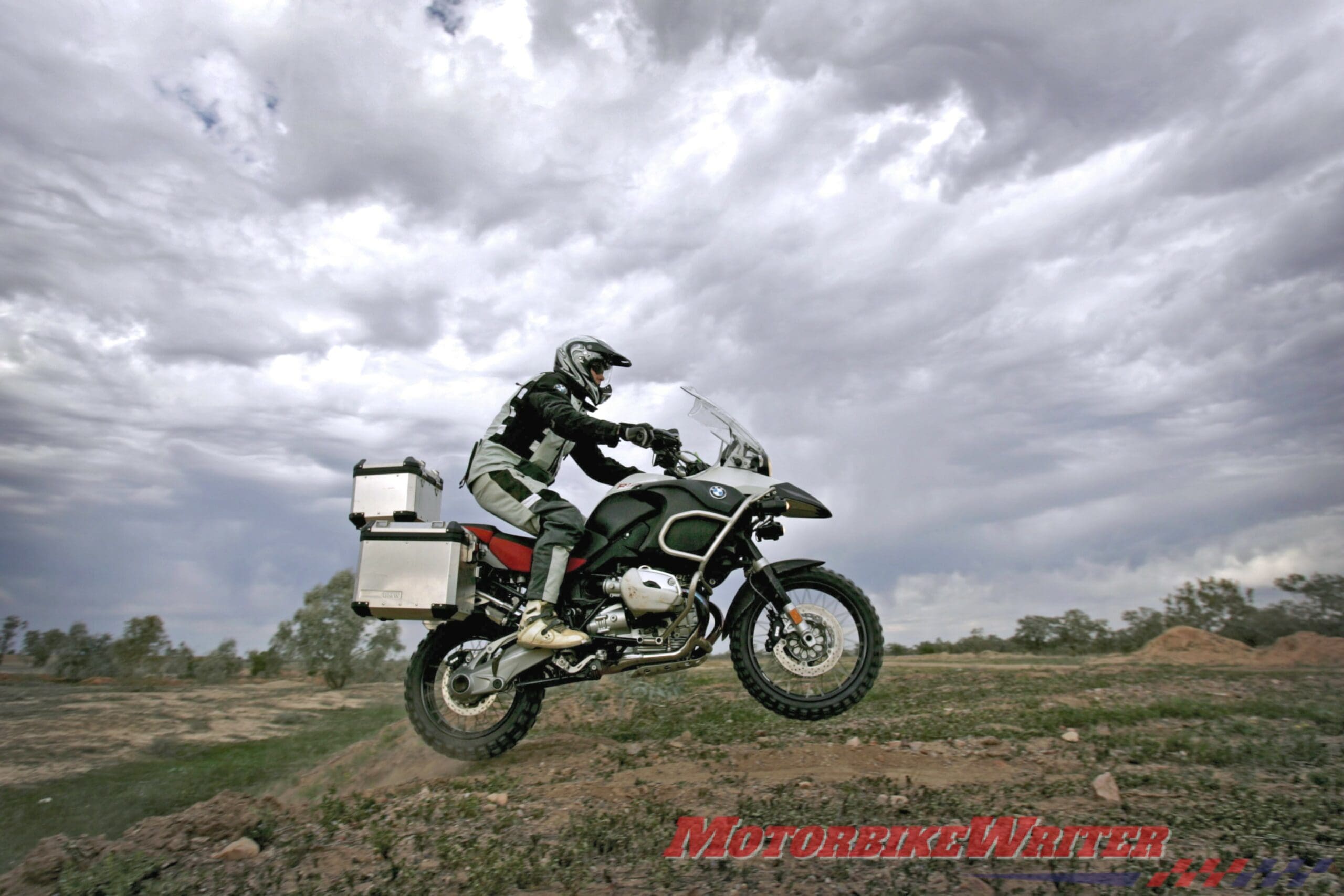Some adventure bikes are big and heavy enough already, so adding a larger fuel tank seems an unnecessary addition of weight.
Do you really need up to 500km of range when service stations are a maximum of about 250-300km apart even in the remote outback?
It’s also extra weight right over the front wheel; just where you don’t want it in soft sand and mud.
Reasons for bigger fuel tank
However, Robin Box of Safari Tanks says there are many reasons for carrying extra fuel.
“It’s true that there aren’t many occasions when you’ll need the full 500km range that our larger tanks offer, but things don’t always go to plan,” he says.
“For starters, with a bike’s standard tank you will often have enough fuel to get you to where you’re going, but that will often mean topping up three to four times a day, just so you have enough fuel to get to the next fuel stop.
“It will probably also mean that you’re only half filling your bike every time you stop, and the novelty of that wears out pretty quickly.”
His comments come in a press release about their new $1140 34-litre tank for the Honda Africa Twin which provides up to 500km of range. The standard tank is 18.9 litres.

Fuel tanks in many touring and adventure bikes are getting smaller as bikes become more fuel efficient. It’s also done to reduce weight and costs.
Robin says a bigger fuel tank is an “insurance policy” that you have more than enough fuel to do the job.
“Nobody likes getting low on fuel, and we all know the feeling of staring at the fuel gauge in sparsely populated country when the tank gets below a quarter full. It’s nobody’s idea of fun,” he says.
“Carrying extra fuel will also give you peace of mind should that next petrol station – just 250km away – be out of fuel, and it does happen.”
Robin says that on several occasions he has had to camp for a couple of days to wait for a fuel truck to arrive after bad weather or a breakdown delayed delivery.
I also encountered an outback servo that had a power failure and couldn’t pump any fuel. We eventually siphoned some out of the owner’s truck and I paid top dollar for the privilege!
After that, I carried a five-litre plastic gerry can on the back rack as my own insurance policy. It also meant I didn’t have extra weight over the front wheel.

Exploring
It’s not just about surviving a lack of fuel, Robin says. It also presents extra opportunities to explore.
“The extra range also gives you the option of checking out that side track you’ve been told about or, in some instances, even turning back and retracing your steps if weather or other events put your trip in jeopardy,” he says.
“The extra fuel range helps to bring out the serious adventure capabilities for those who like the long haul.”


